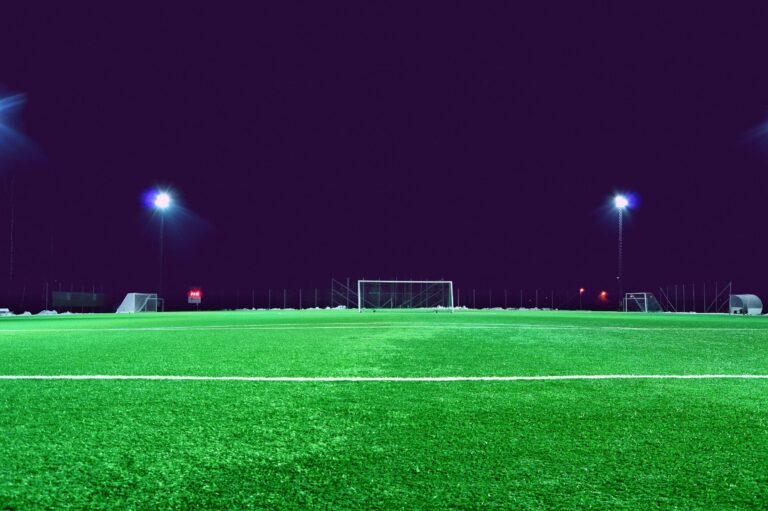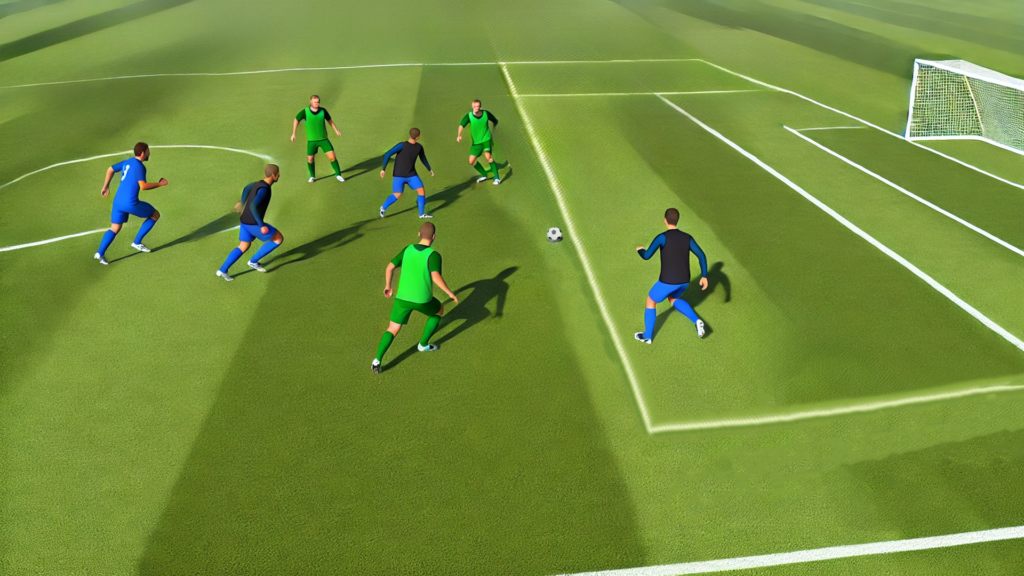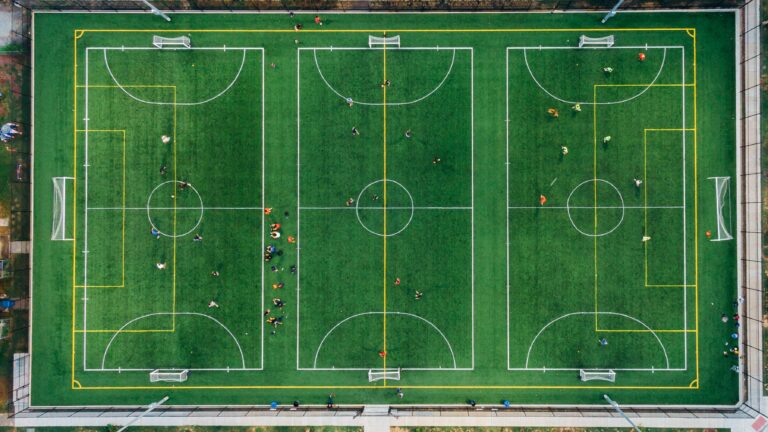The importance of passing drills in football should not be underestimated. Good passing accuracy and quick change of directions are crucial to a team's success. In this blog article, we present the three best drills you can use to get your team in top form. From basic techniques to tactical advice, you'll find everything you need for an effective passing game. These drills are suitable for everyone and will take your team to the next level, whether you're a beginner or a pro.

In football, passing is much more than a simple transfer of the ball. It's a complex art form that combines precision, situational awareness, and creativity. The ability to pass effectively sets the rhythm and flow of the game, determines how well a team can control the match, and opens up scoring opportunities. Legendary midfielders such as Xavi, who epitomised Barcelona's famous tiki-taka style, exemplify how strategic, well-timed passes can maintain possession and control the game's pace, illustrating that good passing is about quality over power.
Additionally, strong passers also have the ability to read the game and manipulate the opposing team's positioning to create advantageous situations. This involves not only technical skills but also an intelligent understanding of the game’s dynamics - knowing where teammates are at any given moment and selecting the optimal type of pass for the situation. This level of awareness can transform skilled passers into pivotal playmakers who can dictate their team's attacking strategy.
The exercise promotes fast passing, decision-making under pressure and team coordination. The outnumbered players learn to keep the ball moving and find gaps, while the outnumbered team develops defence strategies to win the ball.
Set-up: Number of players: 5-7 players (Example: 4 against 3)
Materials:

After each point (either by reaching the number of passes or by losing the ball), the roles are swapped between the outnumbered and outnumbered team so that each player has to both attack and defend.
This exercise promotes precise passing, ball control under pressure and decision-making. The players learn to play the ball in tight spaces and to withstand defensive pressure at the same time.
Set-up: Number of players: 8 (6 forwards, 2 defenders).
Line-up:
6 players (A, B, C, D, E, F) line up evenly distributed outside the circle.
2 players (G and H) position themselves in the centre of the circle as defenders.
Materials:

Player A starts with the ball and passes to one of the other attackers (e.g. player B).
The offences try to pass the ball between each other for as long as possible, while the two defenders in the middle try to intercept the ball or block the passing lane.
The forwards may have a maximum of two contacts with the ball: one for receiving the ball and one for passing it on. Advanced players can switch to direct play.
If a defender wins the ball, he becomes an attacker and the player who caused the ball to be lost moves to the centre as a defender.
Variant 1:
Increasing the difficulty: The playing field can be reduced in size to shorten the passing distances and increase the pressure on the passer.
Variant 2:
Limitation of ball contacts: Instead of two ball contacts per player, the offense players are only allowed one ball contact, which further trains the speed and precision of the passes.
Preparation for the actual training session is essential in order to prevent injuries and get the players in the right frame of mind for the exercises ahead. In this context, the three-person triangle drill is particularly suitable as an effective warm-up exercise. Three players form a triangle and pass the ball to each other in a specific order. The challenge is that each player is only allowed to pass to one other player and the positions are constantly changed. This not only trains passing and ball control, but also improves the tactical thinking of the players. This exercise not only serves as a warm-up, but also prepares the players for the subsequent passing drills.
One of the most important skills in football is passing accuracy. You can use the square game to improve your players' short passing accuracy and understanding of the game. The exercise consists of a square pitch with four players on each side of the pitch. The aim is to pass the ball quickly and accurately from one side to the other without an opposing player intercepting the ball. This exercise not only develops the players' technical skills, but also their ability to read the pitch and make smart tactical decisions.

The zonal drill is one of the best passing drills in football to train tactical thinking, use of space and passing accuracy in different game situations. In this exercise, two teams are formed and the pitch is divided into different zones. Each player is assigned a specific zone within which they must move in order to receive or pass the ball. This restriction means that the players have to know their positions precisely and learn to make quick decisions. The zonal drill is particularly suitable for training wingers and midfielders as it allows them to improve their ability to utilise space. This exercise can also help to improve passing accuracy and strengthen communication within the team.

Short Passes: These are crucial for keeping possession of the ball and are typically used to maintain control and set up more aggressive moves. They are like the careful moves in a chess game, gradually breaking down the opponent's defence.
Long Passes: Long passes can quickly change the game by moving the ball over large distances, often bypassing midfield congestion. This type of pass can give forwards a direct chance to face the defence and create scoring opportunities.
Through Balls: These passes are designed to cut through the defence, setting up a teammate to run onto the ball in a prime scoring position. They require precise timing and a good understanding of teammates' movements and runs.
Switching Play: This pass involves transferring the direction of play from one side of the field to the other. It's used to exploit space on the opposite flank and can unsettle a well-organised defence by creating new angles and running routes for attack.
Counter-Attacking Passes: In moments when the opposition is unbalanced, such as during a transition from defence to offence, these quick, accurate passes can initiate a swift attack, catching the opposition off guard.
The integration of video analysis into training offers numerous advantages, as it enables a precise and objective assessment of athletic performance. By recording movement patterns, zone14 can recognise the finest details that may be overlooked during training. This enables targeted correction of mistakes and fine-tuning of movement patterns. In addition, zone14's video analysis enables the critical review of tactical decisions, game strategies and competition performances with the help of artificial intelligence. Recorded videos can be easily shared and discussed with other coaches or team members thanks to modern technologies, which significantly improves communication and collaboration in the training process. Overall, video analysis makes a decisive contribution to increasing the efficiency of training and optimising the performance of athletes in the long term.
Targeted training with the best passing drills in football can get your team into top form! As already mentioned, passing drills in football are of great importance for the system of play and team performance. With the exercises presented here, you can work specifically on the technique and precision of your players to bring them to a higher level. It is particularly important that you adapt and vary each exercise individually for your team to ensure optimal development. Through regular training, players not only improve their style of play, but also their tactical behaviour and understanding of the game. In this way, you can ensure that your team performs consistently well and plays successfully - whether at amateur or professional level. Take the opportunity to improve your team and lead it to success!